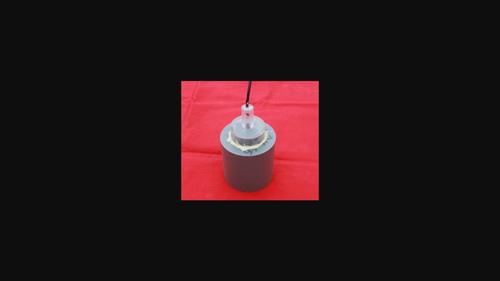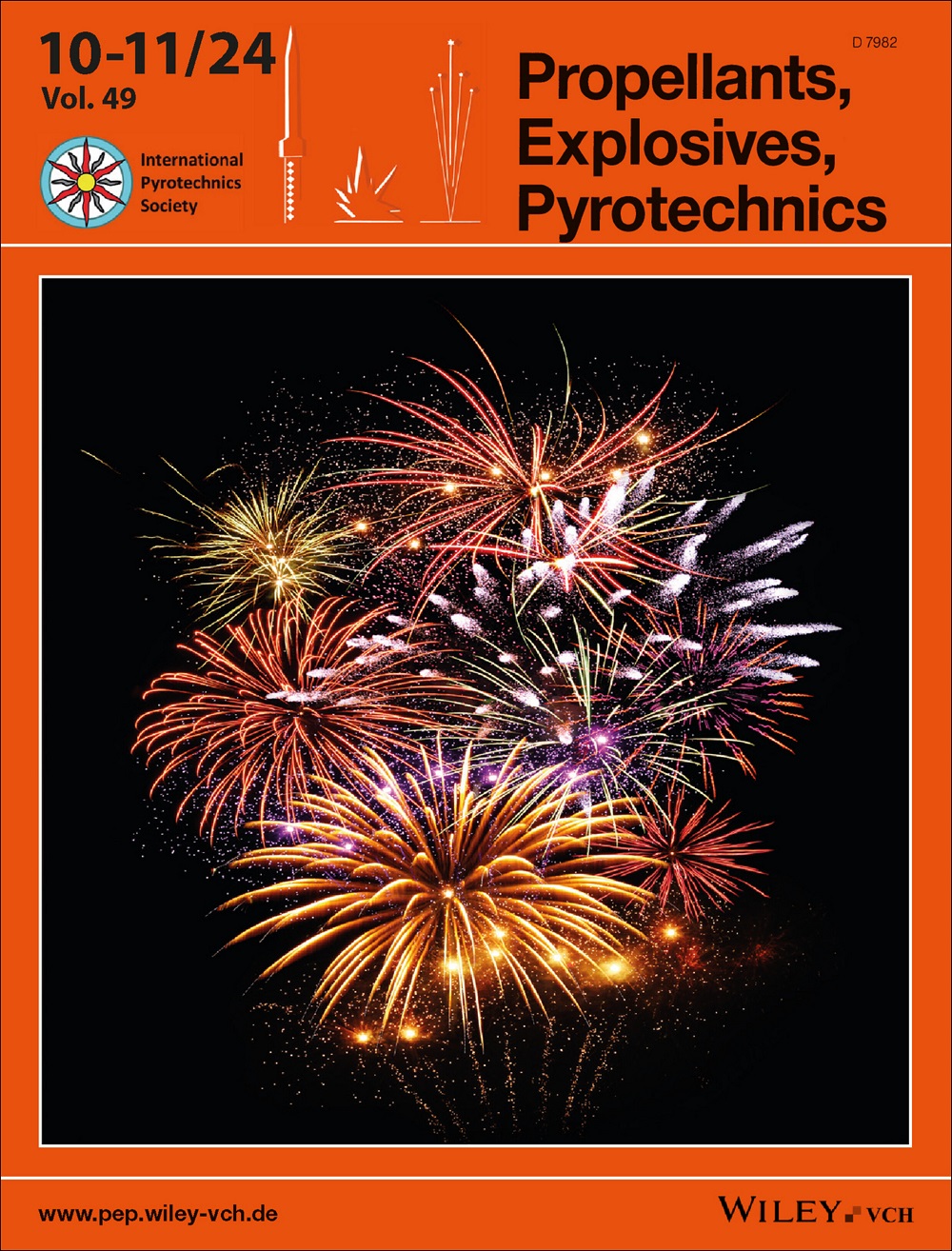基于遗传算法的 HMX 基铝化炸药 JWL-Miller 参数自动优化
IF 2
4区 工程技术
Q3 CHEMISTRY, APPLIED
引用次数: 0
摘要
校准铝化炸药的 JWL-Miller 状态方程(EOS)参数是炸药评估中一项繁琐但重要的工作。通常采用手动校准,但工作可能比较繁琐,而且可能无法获得最佳结果。基于遗传算法程序和有限元软件,建立了一种自动校准方法来优化这一程序。通过与气缸测试结果和水下爆炸实验结果进行迭代计算校准,获得了最佳的 JWL-Miller EOS 参数。采用气瓶试验结果来说明爆炸的初始阶段,并进行水下爆炸实验来校准状态方程中的米勒项。结果表明,气瓶试验结果与模拟结果之间的误差小于 1%,试验结果与模拟结果之间的水下爆炸冲量误差小于 3.73%。优化后的 JWL-Miller EOS 参数将有助于铝化炸药的数值模拟研究。本文章由计算机程序翻译,如有差异,请以英文原文为准。

Automatic Optimization of JWL‐Miller parameters of HMX‐based aluminized explosive based on genetic algorithm
The calibration of JWL‐Miller equation of state (EOS) parameters for aluminized explosive is a cumbersome but important work in explosive evaluation. Manual calibration is usually adopted while the work may be tedious and the optimal results may be unachievable. An automatic calibrating method was established to optimize this procedure based on genetic algorithm program and finite element software. Optimal JWL‐Miller EOS parameters were achieved by iterative calculation calibrating with cylinder test results and underwater‐explosion experiment results. Cylinder test results were adopted to illustrate the initial phase of explosion, and underwater explosion experiments were conducted to calibrating the Miller term of the equation of state. The results showed that the error between cylinder test and simulation result was less than 1 %, the error of underwater explosion impulse between test and simulation results was less than 3.73 %. The optimized parameters of JWL‐Miller EOS will be useful in the numerical simulation research of aluminized explosives.
求助全文
通过发布文献求助,成功后即可免费获取论文全文。
去求助
来源期刊

Propellants, Explosives, Pyrotechnics
工程技术-工程:化工
CiteScore
4.20
自引率
16.70%
发文量
235
审稿时长
2.7 months
期刊介绍:
Propellants, Explosives, Pyrotechnics (PEP) is an international, peer-reviewed journal containing Full Papers, Short Communications, critical Reviews, as well as details of forthcoming meetings and book reviews concerned with the research, development and production in relation to propellants, explosives, and pyrotechnics for all applications. Being the official journal of the International Pyrotechnics Society, PEP is a vital medium and the state-of-the-art forum for the exchange of science and technology in energetic materials. PEP is published 12 times a year.
PEP is devoted to advancing the science, technology and engineering elements in the storage and manipulation of chemical energy, specifically in propellants, explosives and pyrotechnics. Articles should provide scientific context, articulate impact, and be generally applicable to the energetic materials and wider scientific community. PEP is not a defense journal and does not feature the weaponization of materials and related systems or include information that would aid in the development or utilization of improvised explosive systems, e.g., synthesis routes to terrorist explosives.
 求助内容:
求助内容: 应助结果提醒方式:
应助结果提醒方式:


